There's a reason this predator is not only hard to find but hard to spot.
Framed by the lens of the spotting scope, a tiny, wind-whipped, gray wolf howled on Specimen Ridge against a baby blue sky. It was too far to hear, over three miles, but its body language spoke volumes. It was the third frosty day in March of my “Wolf Quest” tour with Natural Habitat Adventures in Yellowstone National Park and our first wolf sighting.
In addition to the ceaselessly staggering views, we’d already seen bison, five-point elk, long-horned sheep, and several coyotes within binocular range. But it was the park’s approximately 145 gray wolves that lured me west from my home in New York City.
A Wolf Quest
We were in the Northern Range, a 600-square-mile habitat that stretches to Montana’s southern border. Despite covering less than 10% of the park, the range boasts the highest density of wildlife. In particular, the Lamar Valley is often called “America’s Serengeti” for its abundance of large animals.
“The more diversity of plants tends to support a greater diversity of animals,” said our guide, Kurt Johnson, the author of A Field Guide to Yellowstone and Grand Teton National Parks.
Close to a seven-minute drive as the crow flies from the majestic predator on the ridge, I wondered, Is this as close as we’re going to get? As a photographer and animal lover, I dreamt of taking photos of the legendary lupines for months.
Recommended Fodor’s Video
The howling black speck on the hill was barely discernible with my naked eye. I’d never known it was there if it weren’t for our naturalist. The truth is, as Johnson would tell me later, “The average distance [to observe a wolf] is over a mile.” At that range, my 600mm lens was useless. It was even hard to see with binoculars. On my previous wildlife adventures, we measured sightings in yards, not miles. Why were we so far away in a protected park?
One reason was simple topography. The Northern Range is vast, with few access roads. If you spot an animal, you’re not allowed to go off-road in a vehicle to get a closer look. But the real reason was far more complex. At the time, I didn’t understand that the distance we kept within Yellowstone was more about the sinister forces beyond its borders.
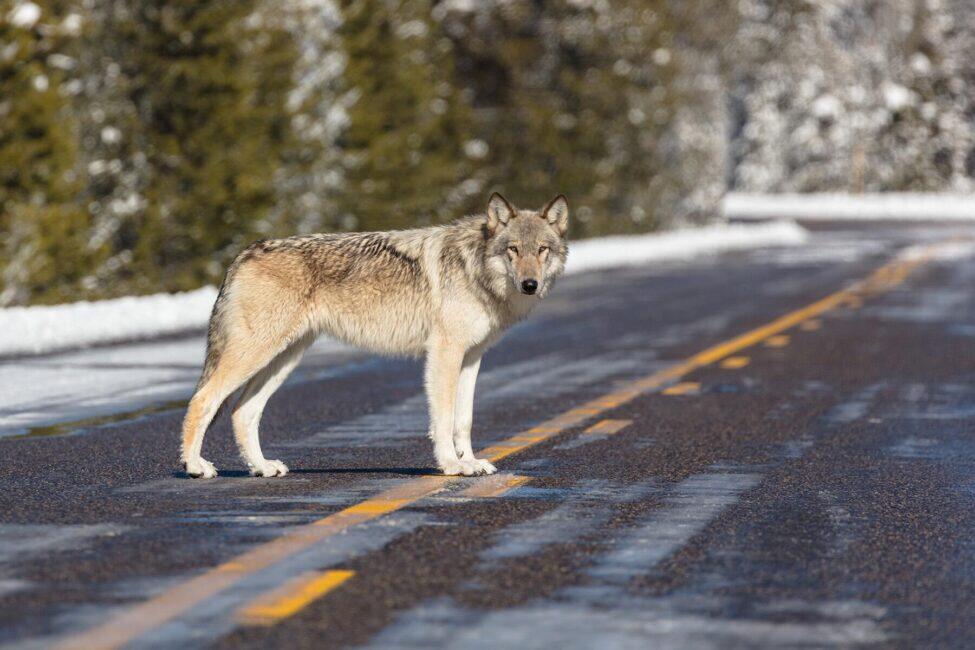
The Yellowstone Wolves
In 1995, gray wolves were reintroduced into Yellowstone after being eradicated throughout the West in the early 1900s and almost 20 years after receiving protection under the Endangered Species Act. An unchecked elk population had destroyed the park’s plant life, and the wolves would restore balance. The decision ignited decades of a societal tug-of-war between residents who believed the wolves would leave the park and kill their livestock and the conservationists who felt they were vital to a healthy ecosystem.
The number of wolves across the nation had grown enough to be removed from the Endangered Species List in 2021. Hunters grabbed their guns, traps, and snares. A year later, protection for the gray wolf was reinstated, except in Wyoming, Montana, and Idaho, the states adjacent to the park. Therein lies the rub.
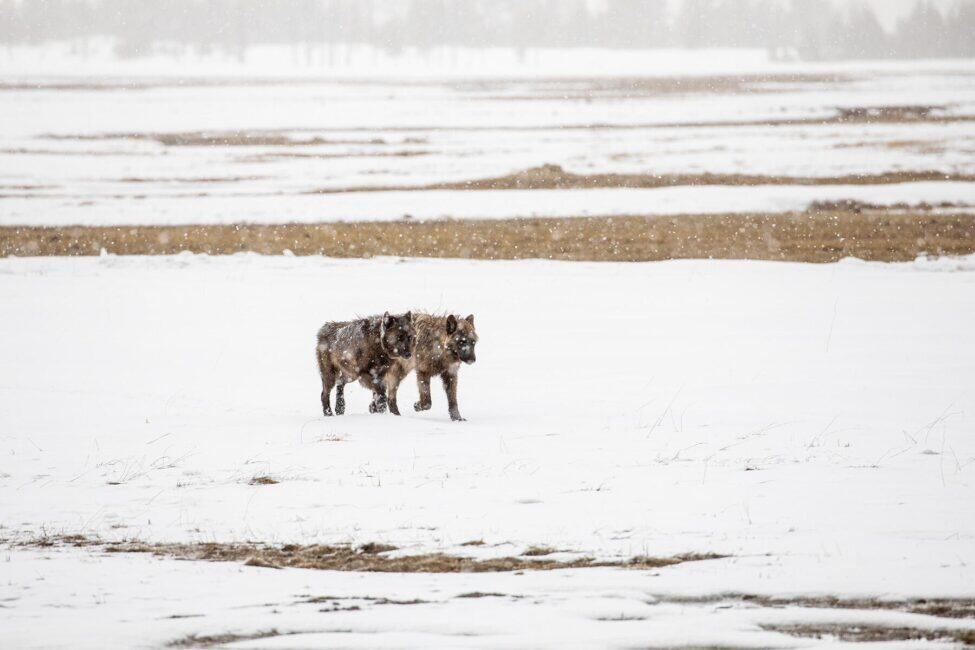
The Dangers of Habituation
Explore Yellowstone, and you’ll find herds of bison strolling through traffic or grazing near crowds. Their laissez-faire attitude is the result of habituation–the term used to describe wildlife so comfortable with people we no longer affect their behavior. When it comes to wolves, such complacency could lead to their demise.
“If they [wolves] traveled at a fair pace for about an hour north [into Montana], they would be in the hunting and traveling zone,” says Rick McIntyre, an acclaimed author of five books on wolves and the man Jane Goodall dubbed “The ultimate guru of wolf behavior.” “That would mean once they cross the invisible line–since they have no understanding of the difference between being in the park and not being in the park–there’s a chance that a habituated wolf would just stand there staring at someone pointing a rifle at them and then be shot and killed.”
Taylor Rabe, a Biological Science Technician for the Wolf Project, the organization responsible for year-round field research, wolf management, and visitor outreach at the park, and her colleagues use hazing to instill fear. They use “paintballs, honking, clapping, and yelling,” she says, “if wolves are lingering in the road or around developed areas [like campgrounds or housing] to help minimize the chances of habituation.”
Yellowstone’s Wolf Culture
While I couldn’t photograph the wolves or have an intimate encounter, our time spent with the local wolf culture (my own term) made up for it. Every day, a small group of devoted, resident amateur wolf-watchers search for the packs. (McIntyre, who worked for the Wolf Project before leaving to write, is an integral part of this group.) When someone spots the familiar lanky silhouette, they notify each other using a private channel that Johnson affectionately called “Wolf Radio.” On the day of the howler, since we saw the wolf first, Johnson put out the alert. After what seemed like minutes, a line of scopes pointed toward Specimen Ridge.
The Sherlock Holmes of Wolves
In order to identify which wolf had captured our attention, McIntyre walked us through a series of deductions. Our subject wore a collar, and its location on the ridge suggested it was part of the Rescue Creek pack. Initially, McIntyre suspected it might be a pregnant female in search of a den site due to the previous births in the area. Then, all of a sudden, McIntyre called out, “Male forward-leaning!” The wolf urinated by stretching its front paws forward instead of lifting its leg to pee, explained McIntyre, a behavior exhibited in young males. Armed with its sex and a quick check of some paperwork, he announced that the wolf was 1339, born in 2020. One of two collared males from the Rescue Creek pack.
As our sighting unfolded, we chatted and shared snacks and scopes. The scene reminded me of the tailgate parties of my youth before a football game when a sense of camaraderie blossomed among strangers. When 1339 did anything, our enthusiasm spiked. We held our breath when he approached a solo bison, too large for a single wolf to challenge. When he passed it without incident, we were collectively relieved. A gifted storyteller, McIntyre shared tales based on thousands of hours of wolf observation. His eloquent accounts of past rivalries, family battles, self-sacrifice, and inspiring feats of heroism rivaled Game of Thrones.

Hell Roaring Overlook
The following day, we received word of a sighting from the Hell Roaring Overlook about six miles northwest of Specimen Ridge. Rabe and a colleague from the Wolf Project, bundled up against the cold, sat in folding chairs, writing notes. Scopes pointed at a spot within a picturesque white valley etched by pine at least two miles away, where the Rescue Creek pack rested under a tree. Rabe knew this pack well–twice a year, the Wolf Project monitors different family groups from mid-November to mid-December and throughout March. From dawn until dusk, they use ground crews, telemetry, GPS, and airplane coverage to track and rigorously record behaviors.
For us, it was pure viewing pleasure. Johnson attached a smartphone adapter to his scope, allowing us to use the device’s LCD as a display. Like a tiny, real-time documentary, we watched the Rescue Creek pack romp in the snow, nap, and wrestle until we lost them in the woods. It was glorious.
When Is the Best Time to See a Wolf?
Winter is the best time to observe wolves. The cold weather encourages more activity, their coats contrast with the snow, and the absence of leaves and other foliage makes them easier to see. The Northern Range is the only area open to personal vehicles, and tourist traffic is virtually nonexistent. A single 57-mile route connects the North Entrance in Gardiner, Montana, and the Northeast Entrance near Cooke City, where accommodations can be found. The weather is volatile. Temperatures can range from mild to bitterly cold. There are also days when low-hanging clouds or snowstorms make it challenging to see.
How to Go
A wildlife sighting can never be guaranteed, but with experienced guides, your chances of finding wolves increase exponentially. There are plenty of day- and multiday-tours to choose from. Select naturalists with access to the local community. It is rare to see a wolf well with your naked eye. Therefore, a quality scope for viewing is a must. You can rent them, but it’s easier to let a guide who has experience focusing a lens on a pinpoint that’s miles away set it up for you.
Scheduling a visit to coincide with the Wolf Project’s field studies in November, December, and March will increase the likelihood of success. Their vehicles are easy to spot, and if they are parked, they likely have eyes on a pack. Like the local wolf watchers, the staff are generous with their time and information.
Although I was initially disappointed, I found that our far-flung view had its own kind of intimacy. The magic of witnessing the wolf pack was exhilarating, regardless of proximity.

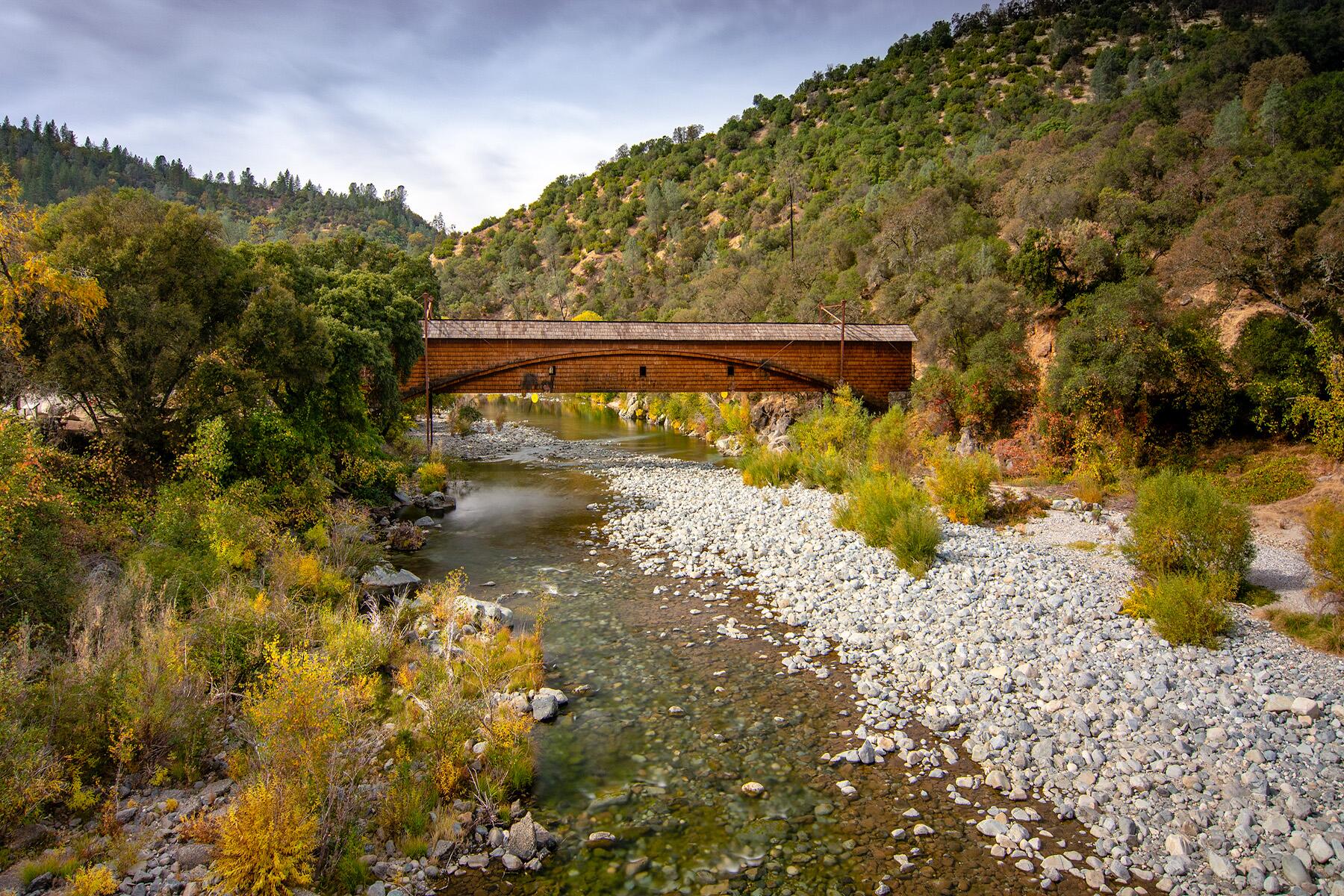
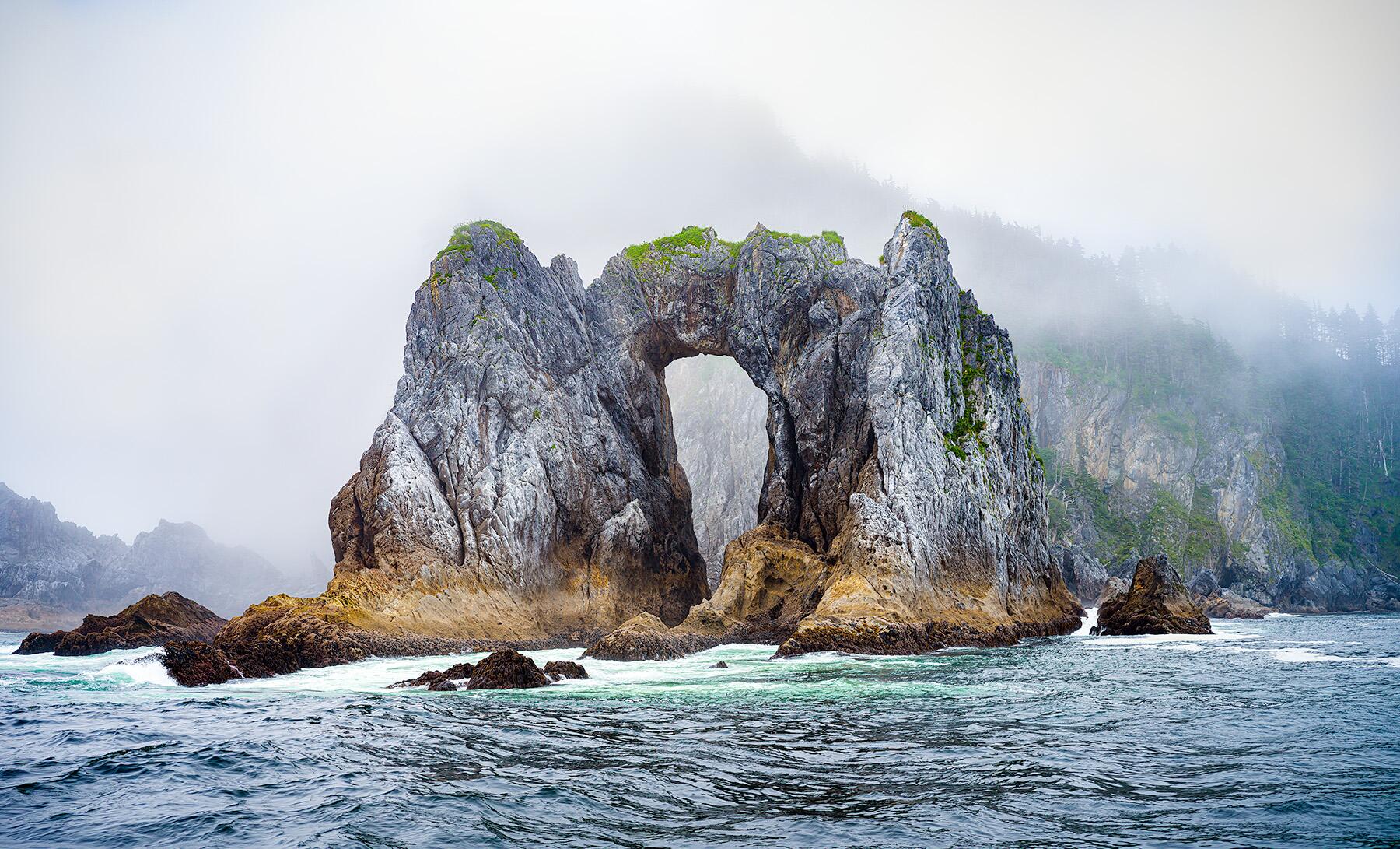
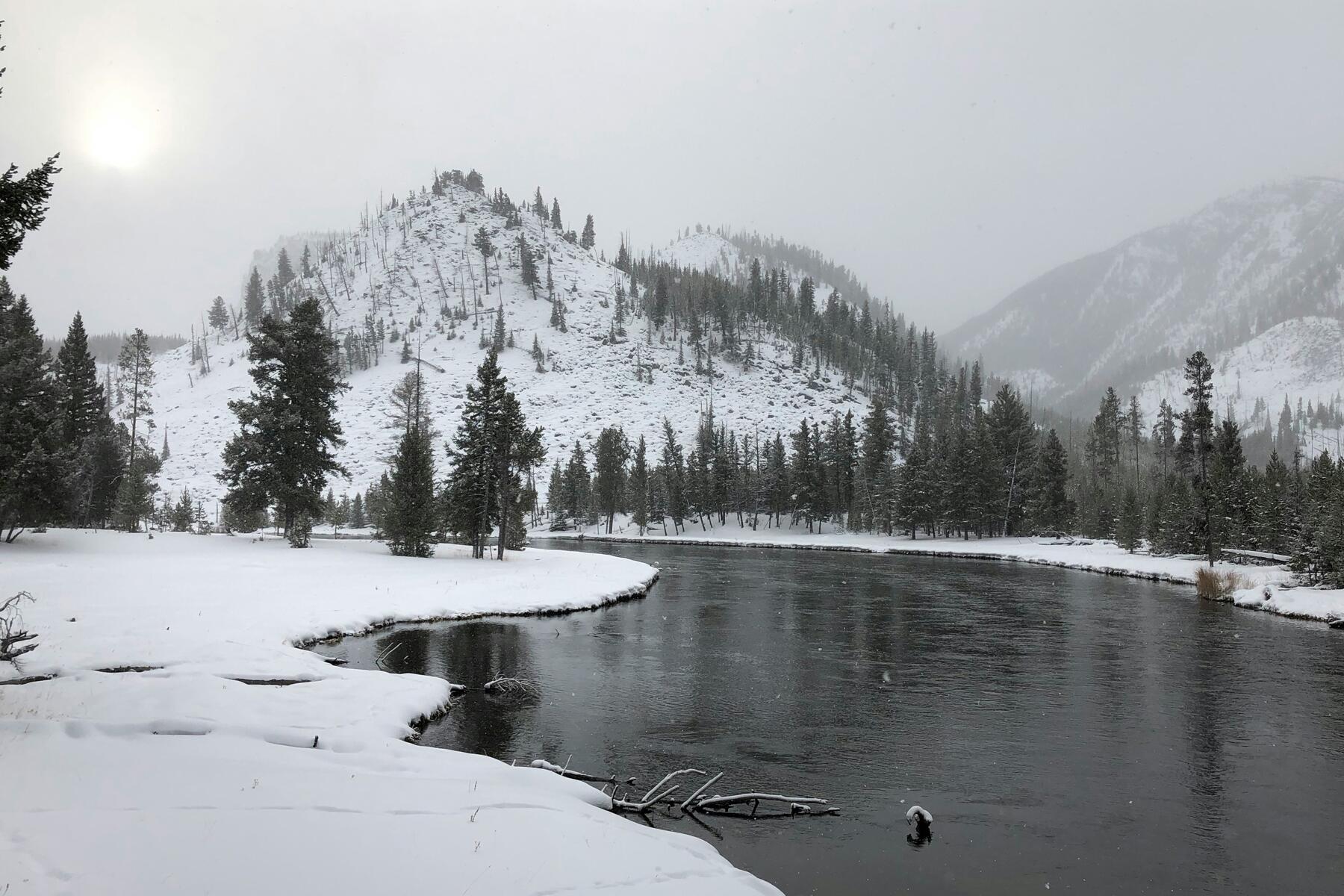
Good information--the states surrounding Yellowstone all want to expand the incredible financial benefits from visitors to this national park to the joy-killing by both locals (think Montana's governor Greg Gianforte and wealthy pals) and foreign trophy hunters. The park's wildlife is already struggling to cope with natural disasters such as wildfires and climate change that destroy their habitat and their normal foods (think grizzly bears' diets that used to be able to depend on formerly abundant native cutthroat trout, whitebark pine nuts, huckleberries, cutwork moth larvae....)...and the never-ending human desire to show dominance by killing.